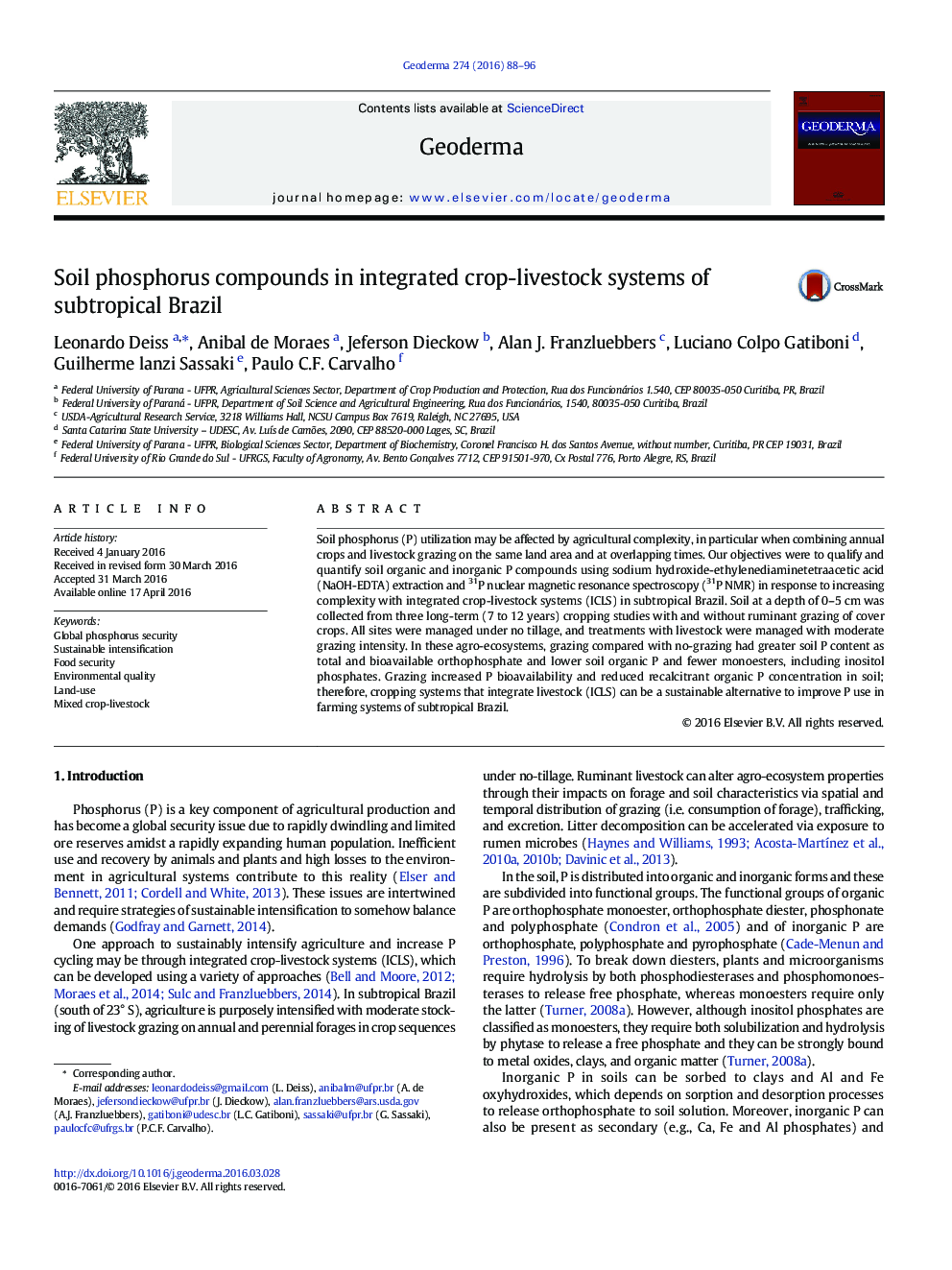| کد مقاله | کد نشریه | سال انتشار | مقاله انگلیسی | نسخه تمام متن |
|---|---|---|---|---|
| 4572920 | 1629443 | 2016 | 9 صفحه PDF | دانلود رایگان |
• Soil phosphorus composition was affected by agricultural complexity.
• Greater agricultural complexity was achieved with grazing of winter cover crops.
• Grazing of cover crops increased soil inorganic and bioavailable P content.
• Grazing reduced soil organic P including myo- and scyllo-Inositol hexakisphosphate.
Soil phosphorus (P) utilization may be affected by agricultural complexity, in particular when combining annual crops and livestock grazing on the same land area and at overlapping times. Our objectives were to qualify and quantify soil organic and inorganic P compounds using sodium hydroxide-ethylenediaminetetraacetic acid (NaOH-EDTA) extraction and 31P nuclear magnetic resonance spectroscopy (31P NMR) in response to increasing complexity with integrated crop-livestock systems (ICLS) in subtropical Brazil. Soil at a depth of 0–5 cm was collected from three long-term (7 to 12 years) cropping studies with and without ruminant grazing of cover crops. All sites were managed under no tillage, and treatments with livestock were managed with moderate grazing intensity. In these agro-ecosystems, grazing compared with no-grazing had greater soil P content as total and bioavailable orthophosphate and lower soil organic P and fewer monoesters, including inositol phosphates. Grazing increased P bioavailability and reduced recalcitrant organic P concentration in soil; therefore, cropping systems that integrate livestock (ICLS) can be a sustainable alternative to improve P use in farming systems of subtropical Brazil.
Journal: Geoderma - Volume 274, 15 July 2016, Pages 88–96
